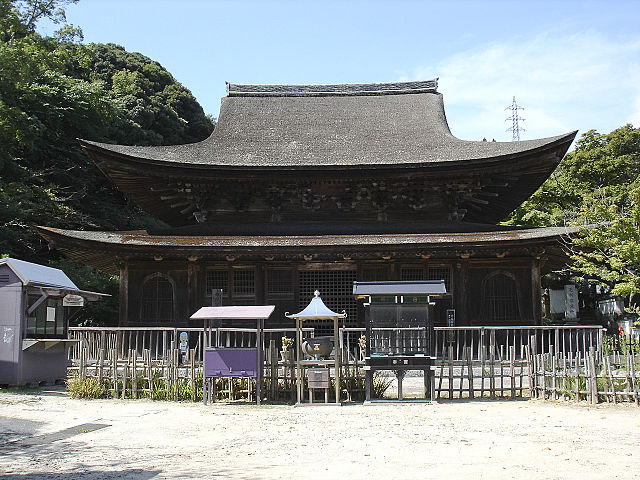Daibutsuyō is a Japanese religious architectural style which emerged in the late 12th or early 13th century. Together with Wayō and Zenshūyō, it is one of the three most significant styles developed by Japanese Buddhism on the basis of Chinese models.
Tōdai-ji's Nandaimon is one of the few extant examples of the daibutsuyō
Nandaimon (detail). Note the exposed tōrihijiki
Tōdai-ji's Nandaimon
Tōdai-ji's Kaizan-dō
Zenshūyō is a Japanese Buddhist architectural style derived from Chinese Song Dynasty architecture. Named after the Zen sect of Buddhism which brought it to Japan, it emerged in the late 12th or early 13th century. Together with Wayō and Daibutsuyō, it is one of the three most significant styles developed by Japanese Buddhism on the basis of Chinese models. Until World War II, this style was called karayō but, like the Daibutsuyō style, it was re-christened by Ōta Hirotarō, a 20th-century scholar. Its most typical features are a more or less linear layout of the garan, paneled doors hanging from hinges, intercolumnar tokyō, cusped windows, tail rafters, ornaments called kibana, and decorative pent roofs.
Kōzan-ji's butsuden in Shimonoseki
A Zen cusped window
A typical Zen main hall
Zen sanmon (Tōfuku-ji)








